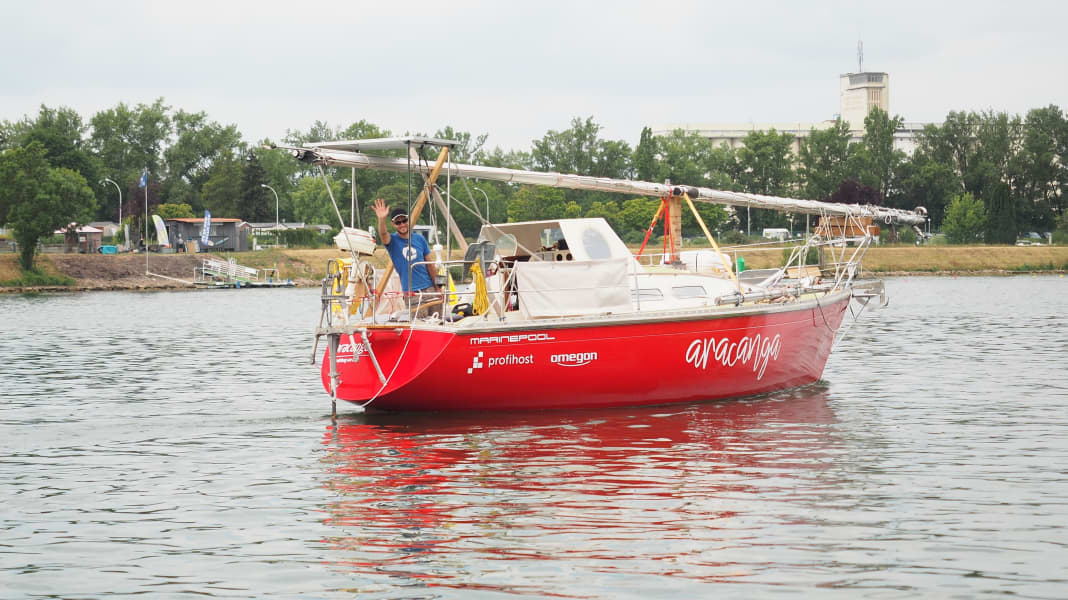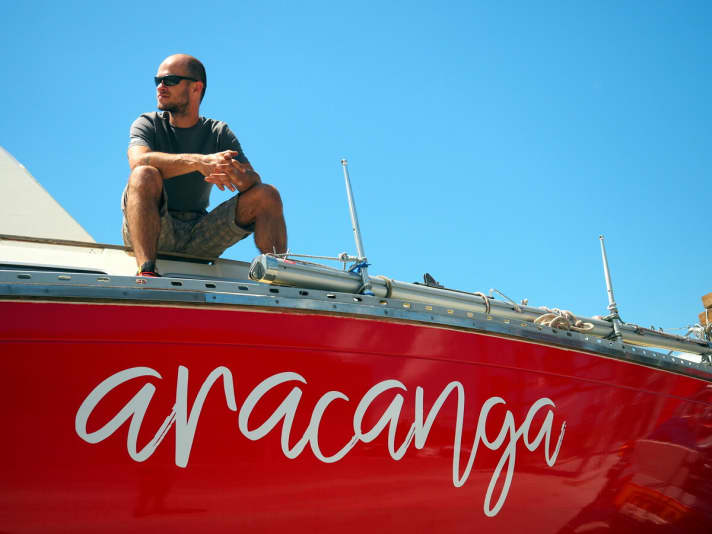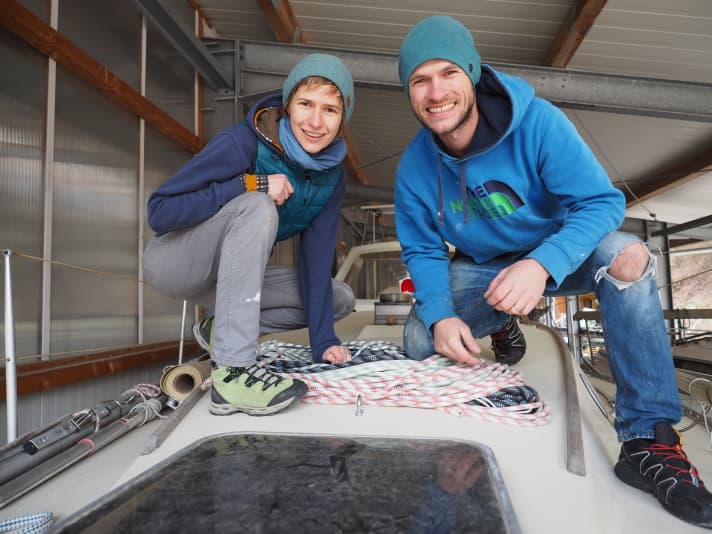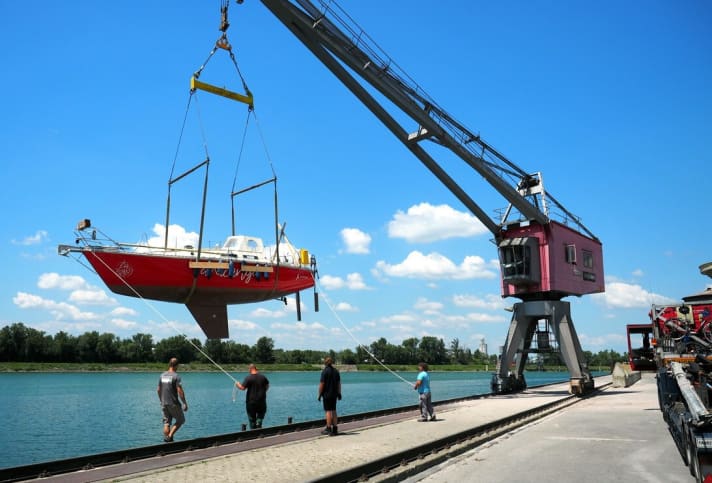
Anyone who has ever been on a long voyage knows this. It's a virus for which there is no recovery except to keep going. I feel the same way. In 2010, as a 25-year-old, I set off on my parents' boat to sail around the world in three years. And to do "something sensible" afterwards.

This rationality lasted for five years - although I realised long before I returned home that the end of one journey was the beginning of new plans and that "rationality" in the common sense is not my strong point.
After the trip is before the trip. Now we're off again, this time with my wife Friederike and a much smaller boat.
Summer 2016: A sailing yacht is advertised on the internet, but the pictures don't quite convince us at first and it's not exactly what we're looking for. But it's on Lake Constance and therefore only an hour's drive away from us. So we arrange an appointment to view it anyway.
We are looking for a small blue water yacht between nine and ten metres in length. We inspect a Bodensee boat without water tanks, navigation or safety equipment. There isn't even a bilge pump. But: the yacht is very solidly built, fulfils the basic requirements of a seaworthy boat and fits well into our budget. And, in contrast to the advert, we really like it. After a second viewing, during which we inspect every last nook and cranny of the little one, it is clear that the boat will be bought and systematically extended and converted.

Converting a relatively "naked" yacht gives us the great advantage of getting to know it from masthead to keel and only installing what we consider necessary and sensible. And since the experience of my first circumnavigation shows that everything that can break will break at some point and too much technology and electronics does not necessarily mean a plus in safety, we are concentrating on the essentials: only hand and foot pumps (apart from an electric bilge pump), no complex electronics, solid new sails, stays and shrouds, a non-slip deck covering, an Aries windvane steering system, a long-term antifouling that should last for the next ten years and a slightly oversized anchor gear.

In order not to stretch our budget too far, we try to buy second-hand where possible and save important items of equipment as search requests on online platforms, which has saved us several thousand euros. The boat and all the equipment therefore only cost around 20,000 euros, although we didn't skimp on essential items such as all the safety equipment or the standing rigging. Here we have listed all the expenses for the boat.
We are not high earners and have not inherited a lot.
We plan the sailing trip according to our financial means and keep the costs within reasonable limits. True to the motto: "Keep it simple". Over the last few years, we have put everything aside and consistently avoided expensive hobbies, going out and shopping. We save one salary, live off the other and cover the running costs of the extension. Two years after buying the boat, we wanted to set sail. Now it's two years later.
Time and route planning are still open and flexible.
The plan is to cross the Atlantic in winter, but everything is open up to and from there. Experience shows that the spontaneous detours are usually the best and that planning the route in too much detail can prevent some wonderful experiences and deprive you of some interesting areas that you may not even have on your radar.
However, the first month of the trip is very specific, as we are only travelling in one direction: inland with the mast down on the canals and rivers through France to the Mediterranean. We have a very simple motto for the rest of the route planning, which also proved its worth on the last trip:
First and foremost, we want to sail where few others sail.
These are usually places where there is little infrastructure for sailors. This is how I got to know places like Easter Island, Pitcairn and Micronesia. You can also put it simply: places where there is no Wi-Fi. Wi-Fi means expensive marinas and internet cafés, lots of sailors and tourists instead of locals, smartphones instead of real socialising.
No wifi means traditional parties with the locals, inviting and being invited and snailmail instead of email. In Micronesia, I hardly ever left an island without sending letters to the neighbouring island, which meant that I immediately made new friends wherever I went. There is nothing nicer than being invited to traditional celebrations and meals and being asked for cheese spaetzle or bread dumplings on board in return. Many people plan their trips around the world's hotspots and deprive themselves of the best experiences.
In half a year in the island world of Micronesia I met three other yachts, in one week in Tahiti 300.
The boat is ready to go. A lot of work has gone into it. Visually and technically, little is reminiscent of the Lake Constance boat from two years ago. We are also ready. Nevertheless, saying goodbye for such a long time is associated with a laughing and a crying eye, and at the start of the big adventure there is a bit of melancholy in the air as well as great anticipation.

